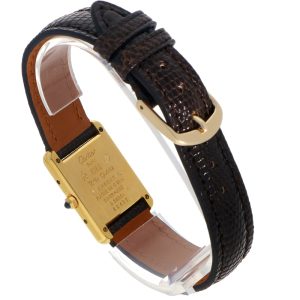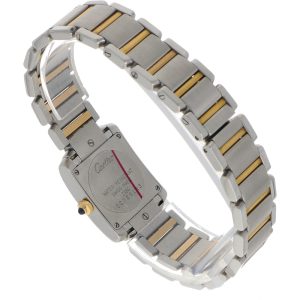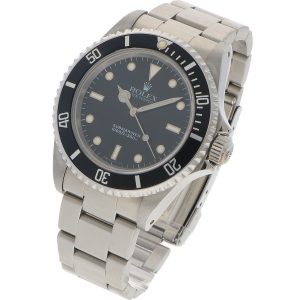Informational articles
/Is my watch waterproof or not?
June 8, 2023
A watch is waterproof if moisture cannot get into it. Of course, most watches have a crown, back cover and glass where, if not sealed properly, moisture can get in. To prevent this, most watches with a certain level of waterproofness have rubber gaskets where openings need to be sealed, such as the crown, glass and back cover. However, these gaskets can be corroded by drying out and chemicals (perfume, alcohol, chlorine), so water resistance can no longer be guaranteed. Salt (sea) water can also be very harmful to watches. Just the word "Water Resistant" does not mean that you have a good waterproof watch. Check the "specifications" to what extent and if your watch can withstand water, as this can be quite confusing.
Water resistance is not a permanent feature according to DIN 8310. Please note that your watch is guaranteed to be waterproof if you have just tested the watch for waterproofness and the watch has passed the applicable test. If you have dropped or bumped the watch, the waterproofness must be tested again. If the watch has been tested positive for waterproofness, it is valid at the time of testing.
Our advice: treat any watch as being not waterproof, then you are always "safe. If you want to go swimming or diving with a watch, ask for advice or buy a watch with a greater water resistance.
According to DIN 8310.
If the watch has tested positive for water resistance, that is true at the time of testing. Water resistance is not a permanent property according to DIN 8310. It should actually be retested every year or prior to when the watch is seriously tested (e.g. diving).
The provisions for watertightness diminish with use. Influences such as strong temperature and pressure changes, age, chlorine, soap or salt water have a negative effect on the gaskets and thus the waterproofing. Suppose you are sunbathing and then jump into cold water, there will be a large pressure and temperature difference which can damage the waterproofness. Watch cases can be made of different (precious) metals that can expand or contract with temperature differences. Also avoid using the crown and chronograph function under water, regardless of the watch's degree of water resistance. If your watch has a screw-down crown, make sure the crown is screwed down before the watch comes into contact with water.
Specifications:
- No mention of "Waterresistant" on the back cover: absolutely not waterproof. Even perspiration and temperature differences can cause moisture in the watch.
- Indication 'water resistant': protects against very limited moisture such as perspiration, rain and water splashes. Advice: avoid these humidities.
- Watches classified by the manufacturer as "waterresistant 3 atm or 30 meters": these are splash-proof (in rain and hand-washing, for example). These are not suitable for showering, bathing, snorkeling, swimming and diving.
- Watches classified by the manufacturer as "water-resistant 5 atm or 50 meters: These are suitable for swimming, but not suitable for diving.
- Watches classified by the manufacturer as "waterresistant 10 atm or 100 meters: These are suitable for swimming, snorkeling and engaging in various water sports, but these are not suitable for diving.
- Watches classified by the manufacturer as 'waterresistant 20 atm or 200 meters': These are suitable for swimming and (non-professional) diving or 'skindiving'.
Tips for maintaining waterproofing:
- Avoid contact with chemicals such as hairspray, perfume, chlorine and alcohol;
- Avoid contact with heat, such as hot water, lots of sunshine and a hair dryer;
- After contact with salt water (in the case of a diving watch), rinse the watch briefly with fresh water and dry it with a cloth;
- Check that the watch glass is not deeply scratched or damaged;
- Prevention is better than cure, so be careful;
- Have the watch checked and tested periodically at the jeweler or watchmaker.
Examples:
Must de Cartier Tank:

No mention of "water resistant," so definitely not waterproof.
Cartier Tank Francaise:

Statement "water-resistant," so treat as "splash-proof," but limit contact with moisture.
Rolex Submariner:

Factory specification '300m' so basically suitable for swimming and diving, if recently tested and found to be waterproof.
Rolex Datejust ref. 1601 (1973)

Factory specification (as it was once intended: 50 - 100m)
Because of the plexiglass and the age of 50 years old, no longer waterproof....

 0
0  0
0  Jun 08
Jun 08